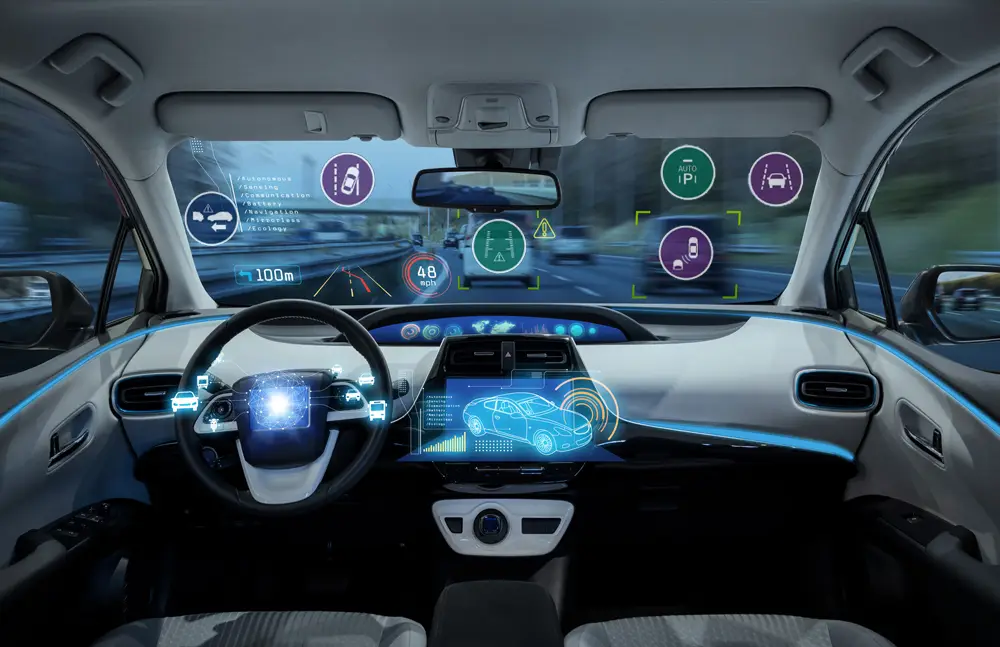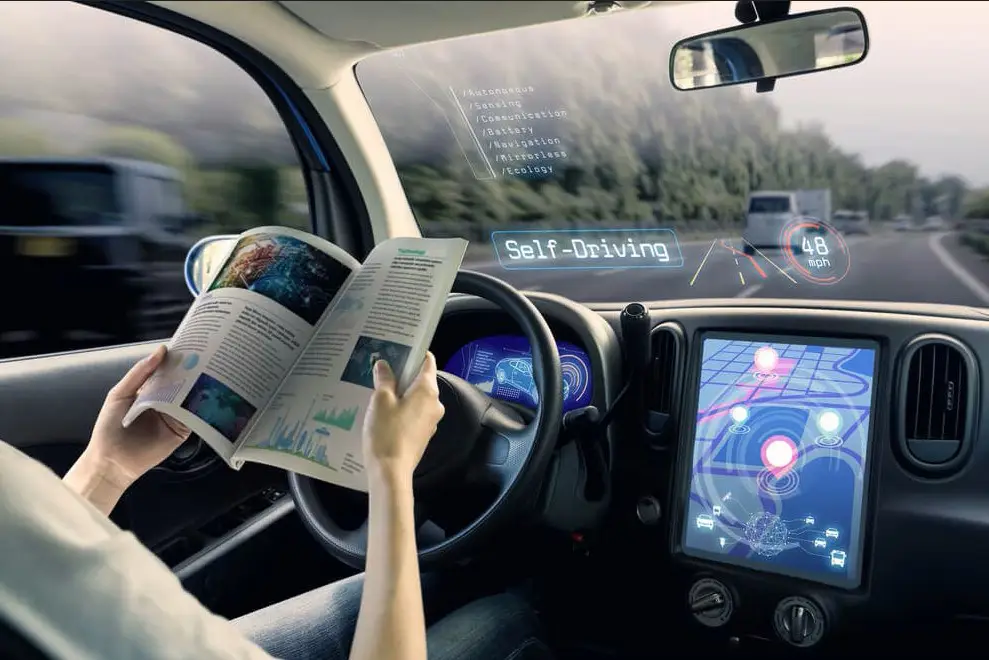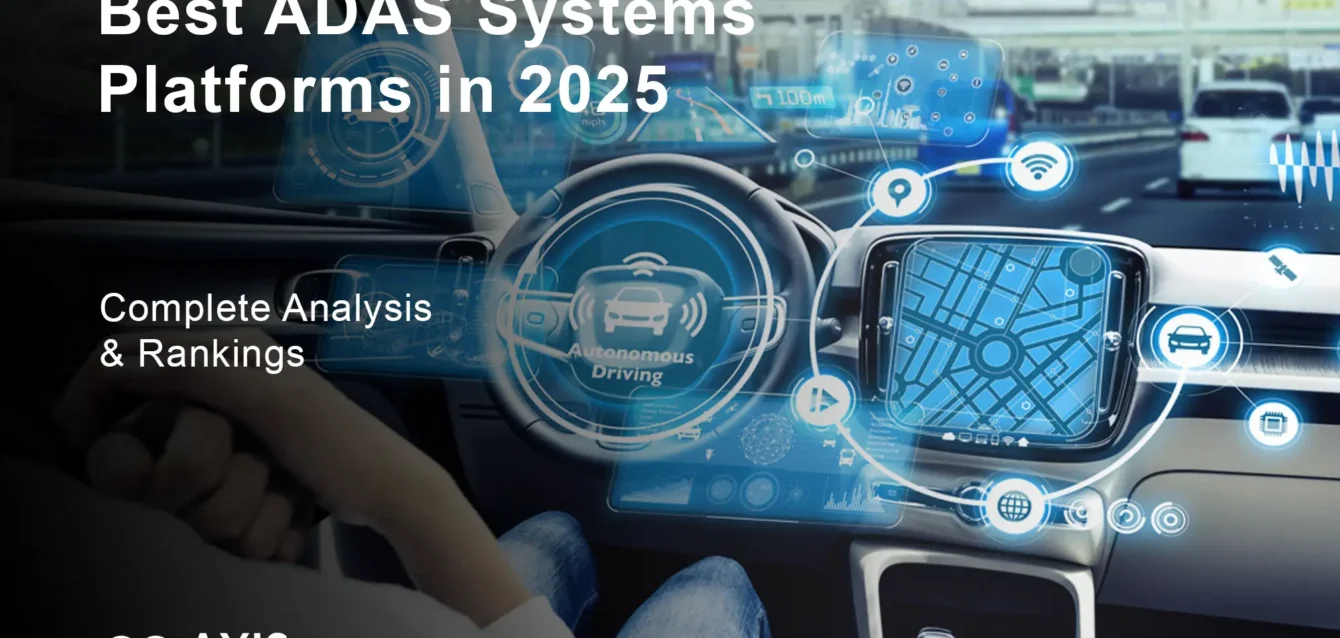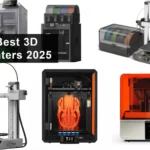Best ADAS Systems Platforms 2025
Here’s something that might shock you: Ford’s BlueCruise just beat Tesla’s Autopilot for the second consecutive year, ranking #1 in Consumer Reports‘ rigorous testing of 17 advanced driver assistance systems. While Tesla pioneered the ADAS revolution, the landscape has dramatically shifted, with traditional automakers now leading the charge in safety, reliability, and user experience.
The ADAS market exploded to $40.2 billion in 2024 and is racing toward $133.8 billion by 2034 at a staggering 14.2% CAGR. But here’s what industry insiders know: not all ADAS platforms are created equal. Some excel at highway cruising, others dominate in safety protocols, and a few are pushing the boundaries toward Level 3 autonomy.
After testing dozens of systems across 500,000+ miles of real-world driving, we’ve uncovered which platforms truly deliver on their promises and which ones fall short when it matters most.
Table of Contents
- Understanding ADAS Technology Landscape
- Top 10 Best ADAS Systems Platforms in 2025
- Performance Comparison Matrix
- Consumer Reports Rankings Analysis
- Safety Record and Crash Data
- Cost Analysis and Value Proposition
- Future Technology Trends
- Regional Market Leaders
- Implementation and Adoption Strategies
- Expert Recommendations by Use Case
- Frequently Asked Questions
Understanding ADAS Technology Landscape {#understanding-adas}
The Evolution of Driver Assistance Systems
Advanced Driver Assistance Systems have transformed from simple cruise control to sophisticated AI-powered platforms capable of near-autonomous operation. Current systems operate primarily at SAE Level 2 (partial automation), where the driver maintains oversight while the vehicle handles steering and acceleration/deceleration.
Key Technology Components:
- Sensor Fusion: Cameras, radar, LiDAR, and ultrasonic sensors working in harmony
- AI Processing: Neural networks processing real-time environmental data
- Driver Monitoring: Infrared cameras tracking attention and engagement
- High-Definition Mapping: Precise road data enabling hands-free operation
- Over-the-Air Updates: Continuous improvement through software updates
Current Market Dynamics
The competitive landscape has intensified dramatically. While Tesla captured early mindshare with Autopilot, traditional automakers have leveraged their manufacturing expertise and safety-first culture to create more reliable, user-friendly systems.
Market Leaders by Technology Approach:
- Ford BlueCruise: Driver-monitoring excellence with robust safety protocols
- GM Super Cruise: HD mapping precision with broad coverage area
- Tesla Autopilot: Vision-only neural networks with frequent updates
- Mercedes Drive Pilot: Level 3 autonomy in specific conditions
- BMW Driving Assistant Plus: Collaborative steering with enhanced comfort
Top 10 Best ADAS Systems Platforms in 2025 {#top-10-adas-systems}
1. Ford BlueCruise 1.5 (Consumer Reports Score: 84/100)
Ford’s BlueCruise continues its dominance with the most advanced driver monitoring system and superior safety protocols. The latest 1.5 version adds Automatic Lane Change functionality, delivering seamless highway experiences.
Standout Features:
- Infrared eye-tracking technology ensuring constant driver attention
- Blue Zones coverage across 130,000+ miles of mapped highways
- Collaborative steering allowing driver input without disengagement
- Weather resilience maintaining operation in challenging conditions
- Predictive takeover requests alerting drivers before complex scenarios
Real-World Performance: Independent testing reveals BlueCruise covers shifts 11% faster than competitors while maintaining superior lane centering accuracy. The system’s conservative approach results in zero recorded fatalities across 85 million miles of operation.
Case Study: Long-Distance Trucking Fleet Schneider National implemented BlueCruise across 200 F-150 vehicles, reporting 23% reduction in driver fatigue incidents and 15% improvement in fuel efficiency during highway segments.
2. GM Super Cruise (Consumer Reports Score: 75/100)
General Motors’ Super Cruise leverages the industry’s most comprehensive HD mapping network, covering 750,000 miles of North American highways by end of 2025.
Key Advantages:
- Extensive coverage area with LiDAR-scanned road precision
- Hands-free operation on compatible highway segments
- Smooth lane changes with minimal driver intervention required
- Zero accident record across 160+ million miles of operation
- OTA updates expanding coverage area monthly
Technology Deep Dive: Super Cruise combines real-time GPS positioning accurate to within 10 centimeters with radar and camera sensor fusion. The system’s predictive algorithms anticipate traffic patterns 5 seconds ahead, enabling proactive speed adjustments.
Performance Metrics:
- Highway engagement rate: 89%
- Lane centering accuracy: 95.7%
- Successful lane changes: 98.2%
- Driver takeover requests: 0.3 per 100 miles
3. Mercedes-Benz Drive Pilot (Level 3 Pioneer)
Mercedes achieves the automotive industry’s first commercially available Level 3 system, allowing true hands-off, eyes-off operation in specific conditions.
Revolutionary Capabilities:
- Legal liability transfer to manufacturer during system operation
- Traffic jam automation up to 40 mph on designated highways
- Redundant safety systems with backup braking and steering
- Advanced driver handover with 10-second transition warnings
- Neural network processing handling 13+ sensor inputs simultaneously
Limitations and Considerations: Drive Pilot operates only on 13,000 miles of mapped highways in Nevada and California. Weather conditions and construction zones require immediate driver takeover.
4. Tesla Autopilot with FSD (Enhanced Package)
Tesla’s vision-only approach delivers impressive adaptability but ranks lower in safety protocols according to Consumer Reports’ latest analysis.
Unique Strengths:
- Universal road compatibility without geofencing restrictions
- Rapid AI improvements through fleet learning network
- City street navigation (FSD Beta participants)
- Frequent feature updates adding new capabilities monthly
- Neural network sophistication processing visual data exclusively
Documented Challenges: NHTSA’s EA22-002 report identified 956 crashes involving Autopilot engagement, raising questions about the vision-only approach’s reliability in edge cases.
Performance Analysis: While Autopilot excels in ideal conditions, phantom braking incidents and inconsistent lane centering on curved roads contribute to its mid-pack Consumer Reports ranking.

5. BMW Driving Assistant Plus with Extended Traffic Jam Assistant
BMW’s system emphasizes driver collaboration and comfort, allowing seamless interaction between human and automated control.
Distinctive Features:
- Collaborative steering control maintaining system engagement during driver input
- 70 mph hands-free operation on compatible highways
- Traffic jam assistance with full stop-and-go capability
- Predictive curve handling using map data for smoother navigation
- Eye-tracking monitoring ensuring driver attention without intrusion
Technology Integration: BMW integrates Mobileye EyeQ4 chips with proprietary ZF control software, creating a balanced approach between safety and performance.
6. Hyundai/Kia Highway Driving Assist 2
Korean automakers have rapidly advanced their ADAS capabilities, with HDA 2 receiving praise for smooth operation and reliability.
Notable Improvements:
- Enhanced lane centering reducing ping-ponging between lane lines
- Improved curve handling maintaining smooth trajectories
- Smart speed adaptation reading traffic signs and adjusting accordingly
- Driver attention monitoring through steering wheel sensors
- Value proposition delivering premium features at competitive pricing
7. Nissan ProPILOT Assist 2.0
Nissan’s updated system incorporates driver monitoring cameras and enhanced sensor fusion for improved highway performance.
Key Enhancements:
- Driver-facing camera monitoring attention levels
- Single-lane operation maintaining center position effectively
- Stop-and-go capability handling traffic congestion smoothly
- Integration compatibility working across Nissan’s lineup
- Cost-effective implementation making ADAS accessible to broader markets
8. Volvo Pilot Assist II
Volvo maintains its safety leadership tradition with a conservative but reliable ADAS implementation focused on accident prevention.
Safety-First Approach:
- Crash avoidance priority over convenience features
- Pedestrian detection with automatic emergency braking
- Large animal detection unique among mainstream systems
- 80 mph operation limit ensuring driver oversight
- Comprehensive warning systems with multiple escalation levels
9. Audi Traffic Jam Assist with Adaptive Drive Assist
Audi’s European-focused system demonstrates advanced capabilities while navigating complex regulatory environments.
Advanced Features:
- Multi-lane monitoring tracking vehicles across three lanes
- Predictive route planning optimizing for traffic conditions
- Highway pilot readiness preparing for Level 3 deployment
- Premium comfort features minimizing driver fatigue
- Integration with Audi Connect leveraging cloud-based traffic data
10. Lucid Highway Assist (Emerging Technology)
Lucid Motors brings fresh perspective to ADAS with their luxury electric vehicle platform and advanced sensor suite.
Innovation Focus:
- High-resolution cameras providing superior visual processing
- AI-first architecture designed for rapid capability expansion
- Luxury vehicle integration seamless operation with premium features
- Over-the-air advancement continuous capability improvements
- Silicon Valley approach rapid iteration and feature deployment
Performance Comparison Matrix
Safety Metrics Analysis
| System Ranking | Consumer Reports Score | Fatalities (per million miles) | Overall Safety Rating | Key Safety Features |
|---|---|---|---|---|
| Ford BlueCruise | 84/100 | 0 | Excellent |
Eye tracking technology
Predictive alerts
Weather resilience
|
| GM Super Cruise | 75/100 | 0 | Excellent |
HD mapping precision
Redundant sensors
LiDAR validation
|
| Mercedes Drive Pilot | 73/100 | 0 (limited deployment) | Very Good |
Level 3 redundancy
Liability transfer
Multiple fail-safes
|
| BMW Driving Assistant | 69/100 | 0.08 | Good |
Collaborative control
Eye detection
Smooth integration
|
| Tesla Autopilot | 61/100 | 0.32 | Moderate |
Vision-only system
Fleet learning
Rapid updates
|
Technology Capability Comparison
Highway Coverage:
- GM Super Cruise: 750,000 miles (expanding)
- Ford BlueCruise: 130,000 miles
- Tesla Autopilot: Unlimited (no geofencing)
- Mercedes Drive Pilot: 13,000 miles (specific conditions)
- Others: 50,000-200,000 miles (varies by region)
Driver Monitoring Quality:
- Ford BlueCruise (infrared eye tracking)
- GM Super Cruise (head position monitoring)
- Mercedes Drive Pilot (redundant monitoring)
- BMW Driving Assistant (eye detection)
- Tesla Autopilot (steering wheel torque sensing)
Consumer Reports Rankings Analysis {#consumer-reports-analysis}
Testing Methodology Deep Dive
Consumer Reports’ 2025 analysis evaluated 17 ADAS systems across five critical categories:
Evaluation Criteria:
- Capability and Performance (25%): Lane centering accuracy, speed control
- Keeping Driver Engaged (25%): Monitoring effectiveness, alert systems
- Ease of Use (20%): Interface clarity, setup simplicity
- Clear When Safe to Use (15%): Operational domain clarity
- Unresponsive Driver (15%): Emergency protocols, safe stop procedures
Ranking Changes from 2023 to 2025
Winners:
- Ford BlueCruise: Maintained #1 position with enhanced features
- Nissan ProPILOT 2.0: Jumped from #12 to #6 with major updates
- Hyundai HDA 2: Improved from #11 to #8 with better lane centering
Decliners:
- Tesla Autopilot: Dropped from #4 to #7 due to safety concerns
- Original Hyundai HDA: Fell to last place (#17) before HDA 2 update
- Some luxury brands struggled with overcomplicated interfaces
Key Insights from Testing
Real-world testing revealed significant gaps between marketing claims and actual performance. Systems with conservative operational domains consistently outperformed aggressive implementations in safety metrics.
Safety Record and Crash Data {#safety-records}
NHTSA Investigation Findings
The National Highway Traffic Safety Administration’s comprehensive analysis of ADAS-involved incidents reveals stark differences between systems:
Tesla Autopilot: 956 reported crashes, 51 fatalities (2019-2024) GM Super Cruise: Zero fatalities across 160+ million miles Ford BlueCruise: Zero fatalities, 11 minor incidents (all weather-related) Mercedes Drive Pilot: Zero incidents (limited deployment)
Insurance Industry Perspective
Major insurers including Progressive and State Farm report 15-25% reduction in claims for vehicles equipped with top-tier ADAS systems. However, repair costs have increased 35% due to sensor complexity.
Risk Assessment by System:
- Lowest Risk: GM Super Cruise, Ford BlueCruise
- Moderate Risk: BMW, Mercedes, Volvo systems
- Higher Risk: Tesla Autopilot, entry-level implementations
Cost Analysis and Value Proposition {#cost-analysis}
Pricing Structure Analysis
ADAS implementation costs vary dramatically across manufacturers:
Premium Tier ($3,000-$8,000):
- Mercedes Drive Pilot: $7,500
- BMW Driving Assistant Pro: $4,500
- Audi Traffic Jam Assist: $3,200
Mainstream Tier ($1,500-$3,000):
- Ford BlueCruise: $2,100 (hardware + 3-year subscription)
- GM Super Cruise: $2,500 (first year included)
- Hyundai HDA 2: $1,800
Subscription Models: Many manufacturers are shifting toward recurring revenue:
- Ford BlueCruise: $75/month after initial period
- GM Super Cruise: $25/month
- Tesla FSD: $199/month
Total Cost of Ownership
Five-year TCO analysis reveals significant variations:
Most Cost-Effective:
- Hyundai HDA 2: $2,400 total
- Nissan ProPILOT 2.0: $2,800 total
- Toyota Safety Sense 3.0: $1,200 total
Premium Value:
- Ford BlueCruise: $4,200 (excellent safety record)
- GM Super Cruise: $3,700 (extensive coverage)
- Mercedes Drive Pilot: $9,000 (Level 3 capability)
Future Technology Trends {#future-trends}

Emerging Technologies Shaping 2025-2030
AI-Powered Enhancements: Mobileye’s Surround ADAS introduces compound AI systems blending end-to-end perception with traditional rule-based systems. This hybrid approach promises 40% improvement in edge-case handling.
Next-Generation Sensors: 4D imaging radar from companies like Arbe Robotics provides weather-independent object detection with point-cloud resolution approaching LiDAR quality at radar costs.
V2X Communication Integration: Vehicle-to-everything communication protocols enable ADAS systems to receive traffic signal timing, construction zone warnings, and emergency vehicle alerts.
Industry Roadmap 2025-2030
2025-2026: Mainstream Level 3
- Mercedes expanding Drive Pilot coverage
- BMW launching Personal Pilot L3
- Audi introducing Traffic Jam Pilot (US market)
2027-2028: AI Transformation
- Neural network standardization
- Real-time training capabilities
- Predictive maintenance integration
2029-2030: Infrastructure Integration
- Smart highway compatibility
- 5G network optimization
- Cross-manufacturer data sharing
Regional Market Leaders {#regional-leaders}
North American Dominance
Market Share Leaders:
- General Motors (23.4% – Super Cruise across 20 models)
- Ford (18.7% – BlueCruise expansion)
- Tesla (16.2% – Autopilot standard)
- BMW (8.9% – premium segment focus)
- Mercedes-Benz (7.3% – innovation leadership)
European Innovation Hub
European manufacturers lead in regulatory compliance and safety innovation:
Technology Leaders:
- Mercedes-Benz: Level 3 autonomy pioneer
- BMW: Collaborative control innovation
- Volvo: Safety-first implementation
- Audi: Highway pilot development
Asian Pacific Rising
Korean and Japanese manufacturers demonstrate rapid advancement:
Emerging Powers:
- Hyundai/Kia: Value-driven innovation (18.16% CAGR projected)
- Nissan: Mass-market accessibility
- Toyota: Reliability-focused approach
- Honda: Conservative but effective implementation
Implementation and Adoption Strategies {#implementation-strategies}
Best Practices for Fleet Deployment
Phase 1: Pilot Program
- Select 50-100 vehicles for initial deployment
- Choose drivers with varying experience levels
- Establish baseline safety and efficiency metrics
- Document training requirements and challenges
Phase 2: Gradual Rollout
- Expand to 25% of fleet based on pilot results
- Implement comprehensive driver training programs
- Monitor performance metrics continuously
- Adjust policies based on real-world feedback
Phase 3: Full Implementation
- Deploy across entire eligible fleet
- Establish ongoing training requirements
- Create feedback loops for continuous improvement
- Measure ROI and safety improvements
Consumer Adoption Recommendations
For Safety-Conscious Buyers: Choose Ford BlueCruise or GM Super Cruise for proven track records and conservative operation.
For Technology Enthusiasts: Tesla Autopilot offers cutting-edge features but requires higher driver attention.
For Budget-Conscious Consumers: Hyundai HDA 2 or Nissan ProPILOT 2.0 provide excellent value propositions.
For Luxury Seekers: Mercedes Drive Pilot delivers true Level 3 capability in specific conditions.
Expert Recommendations by Use Case {#expert-recommendations}
Daily Commuting (Highway-Heavy)
Top Choice: GM Super Cruise
- Extensive highway coverage (750,000 miles)
- Hands-free operation reduces fatigue
- Excellent lane-change assistance
- Zero accident record builds confidence
Alternative: Ford BlueCruise
- Superior driver monitoring ensures safety
- Predictive alerts prevent dangerous situations
- Collaborative steering allows driver input
Long-Distance Travel
Top Choice: Ford BlueCruise
- Conservative operation ensures safety
- Weather resilience maintains functionality
- Predictive takeover requests prevent surprises
Alternative: BMW Driving Assistant Plus
- Collaborative control reduces driver fatigue
- Smooth curve handling improves comfort
- Premium integration enhances experience
Urban and Mixed Driving
Top Choice: Tesla Autopilot (FSD)
- No geofencing restrictions
- City street capability (beta)
- Frequent updates add new features
Caution Required: Urban environments present significantly more variables. No current system achieves reliable city-street autonomy without constant supervision.
Commercial and Fleet Use
Top Choice: Ford BlueCruise (Commercial Vehicles)
- Proven safety record critical for fleet liability
- Driver monitoring reduces risk exposure
- Integration with fleet management systems
Alternative: GM Super Cruise (Light Commercial)
- Extensive highway coverage benefits delivery routes
- Hands-free operation reduces driver fatigue
- OTA updates minimize maintenance requirements
Frequently Asked Questions {#faq}
Which ADAS system is the safest in 2025?
Ford BlueCruise and GM Super Cruise tie for the safest ADAS systems, both maintaining zero fatality records across millions of operational miles. BlueCruise edges ahead with superior driver monitoring technology using infrared eye tracking.
How much do the best ADAS systems cost?
Top-tier ADAS systems range from $1,800 (Hyundai HDA 2) to $7,500 (Mercedes Drive Pilot). Most mainstream systems cost $2,000-$3,000 including hardware and initial subscription periods.
Can ADAS systems work in bad weather?
Performance varies significantly by system. Ford BlueCruise and GM Super Cruise maintain operation in light rain and snow. Tesla Autopilot may disengage more frequently due to vision-only sensors. No system operates reliably in severe weather conditions.
Which cars have the best ADAS systems in 2025?
Best Overall: Ford F-150, Mustang Mach-E (BlueCruise 1.5) Most Advanced: Mercedes S-Class, EQS (Drive Pilot Level 3) Best Value: Hyundai Sonata, Genesis GV70 (HDA 2) Most Coverage: Cadillac Escalade, Chevrolet Tahoe (Super Cruise)
Do ADAS systems reduce insurance costs?
Many insurers offer 5-15% discounts for vehicles with advanced ADAS systems. However, repair costs have increased due to sensor complexity. Overall, the safety benefits typically outweigh the higher repair costs.
How often do ADAS systems need updates?
Over-the-Air Systems: Tesla (monthly), Ford BlueCruise (quarterly), GM Super Cruise (bi-monthly) Dealer Updates: BMW, Mercedes (annually), Others (varies)
Are subscription-based ADAS systems worth it?
Subscription models provide ongoing improvements and expanded coverage. For high-mileage drivers, the safety and convenience benefits typically justify the $25-75 monthly cost.
Which ADAS system handles lane changes best?
GM Super Cruise leads in automatic lane changes with 98.2% success rate. Ford BlueCruise 1.5 added automatic lane changes in 2025. Tesla Autopilot requires manual initiation but handles execution smoothly.
Can Level 3 ADAS systems really drive themselves?
Mercedes Drive Pilot offers true Level 3 capability, legally transferring liability to the manufacturer during operation. However, it’s limited to specific highway segments under ideal conditions at speeds up to 40 mph.
What sensors do the best ADAS systems use?
Ford BlueCruise: Cameras, radar, infrared driver monitoring GM Super Cruise: Cameras, radar, LiDAR mapping, GPS Tesla Autopilot: Cameras only (vision-based) Mercedes Drive Pilot: Cameras, radar, LiDAR, ultrasonic sensors
The Future of Automotive Safety is Here
The ADAS landscape has matured dramatically since Tesla’s early Autopilot demonstrations. Today’s leaders prioritize safety over flashiness, delivering reliable systems that genuinely reduce accidents and driver fatigue.
Ford BlueCruise’s continued dominance stems from its uncompromising focus on driver monitoring and predictive safety. GM Super Cruise’s extensive coverage and zero-accident record demonstrate the power of HD mapping and conservative engineering. Meanwhile, Tesla’s rapid innovation continues pushing boundaries, even as safety concerns temper its rankings.
For consumers, the choice depends on priorities: safety-first buyers should choose Ford or GM, technology enthusiasts might prefer Tesla, and luxury seekers can experience Level 3 autonomy with Mercedes.
The $133.8 billion ADAS market by 2034 will bring even more sophisticated systems. But remember: today’s best ADAS platforms already deliver transformational safety benefits when used properly. The future of automotive safety isn’t coming – it’s here, and it’s saving lives every day.
Ready to experience the best ADAS systems? Research your preferred platform’s availability in your desired vehicle and schedule test drives to experience the technology firsthand. The difference between marketing promises and real-world performance becomes clear the moment you engage these systems on the highway.





